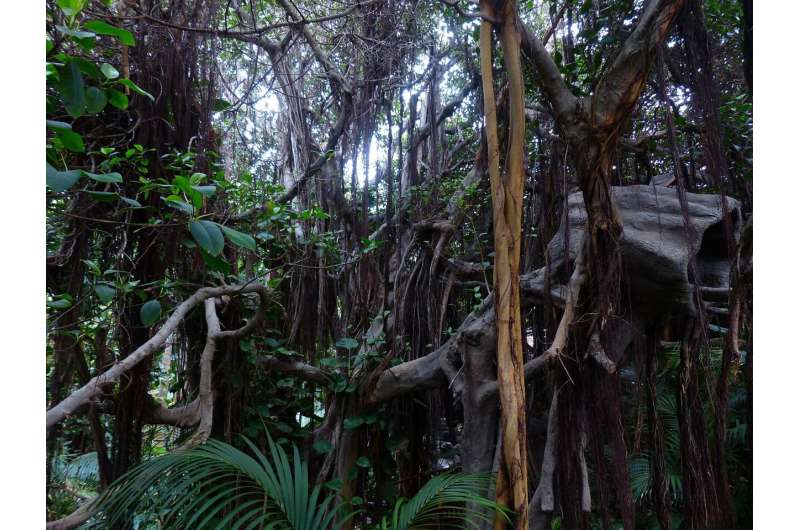This article has been reviewed according to Science X's editorial process and policies. Editors have highlighted the following attributes while ensuring the content's credibility:
fact-checked
peer-reviewed publication
trusted source
proofread
Lianas, trees show varied stem xylem structure-function link

The xylem of the plant stem performs several important functions. Elucidating the coordination or trade-offs between xylem functions is critical for understanding plant ecological strategy and adaptation to different environments. However, how xylem cell tissues influence their functions among different growth forms remains unresolved.
In a study published in the American Journal of Botany, researchers from the Xishuangbanna Tropical Botanical Garden (XTBG) of the Chinese Academy of Sciences investigated the variation and associations in stem xylem water transport, mechanical support, and storage functions between lianas and trees in three different ecosystems in southwest China.
The researchers measured 18 xylem functional traits related to water transport, mechanical support, and storage in 15 liana species and 16 tree species from three different sites, including a tropical rainforest, a hot and dry valley savanna, and a subtropical evergreen broadleaved forest in Yunnan Province, Southwest China.
They analyzed differences in stem xylem functional traits between lianas and trees, identified key traits associated with these functions, and examined the relationships among water transport, mechanical support, and storage functions in both growth forms.
The results revealed distinct ecological strategies between lianas and trees, with liana species having greater hydraulic efficiency and tree species having greater mechanical strength. Variation in stem hydraulic and mechanical traits were certainly related to xylem structure, besides growth form and habitat, while variation in stem storage traits was mainly related to site (environment). Starch and soluble sugars appear to help lianas adapt to changing environmental conditions.
In lianas, there is a consistent trade-off between the water transport capacity and mechanical support by xylem, in contrast to trees where such trade-offs are less common or infrequent. In addition, the relationships between water transport and storage functions in both lianas and trees are complex and multifaceted.
"Our study addresses the existing gap in research on storage functions in different plant species across different environments. It provides valuable insights into how plants adapt to environmental changes and the different ecological strategies used by lianas and by trees to balance the demands of hydraulic transport, mechanical support, and storage," said Zhang Jiaolin of XTBG.
More information: Ke‐Yan Zhang et al, Linkages among stem xylem transport, biomechanics, and storage in lianas and trees across three contrasting environments, American Journal of Botany (2024). DOI: 10.1002/ajb2.16290
Journal information: American Journal of Botany
Provided by Chinese Academy of Sciences




















